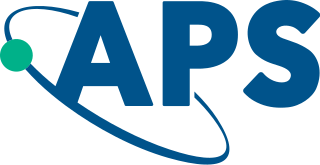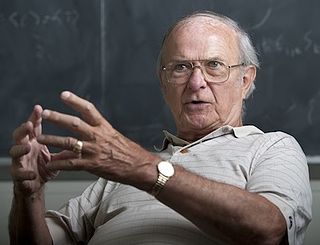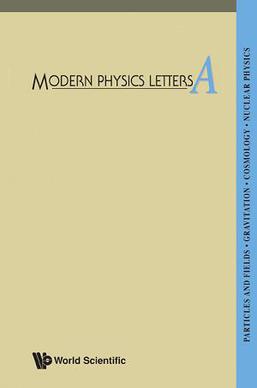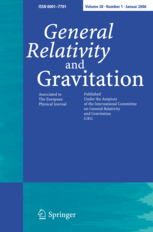
In academic publishing, scientific journal is a periodical publication designed to further the progress of science by disseminating new research findings to the scientific community. These journals serve as a platform for researchers, scholars, and scientists to share their latest discoveries, insights, and methodologies across a multitude of scientific disciplines. Unlike professional or trade magazines, scientific journals are characterized by their rigorous peer-review process, which aims to ensure the validity, reliability, and quality of the published content. With origins dating back to the 17th century, the publication of scientific journals has evolved significantly, playing a pivotal role in the advancement of scientific knowledge, fostering academic discourse, and facilitating collaboration within the scientific community.

The American Physical Society (APS) is a not-for-profit membership organization of professionals in physics and related disciplines, comprising nearly fifty divisions, sections, and other units. Its mission is the advancement and diffusion of knowledge of physics. The society publishes more than a dozen scientific journals, including the prestigious Physical Review and Physical Review Letters, and organizes more than twenty science meetings each year. APS is a member society of the American Institute of Physics. Since January 2021 the organization has been led by chief executive officer Jonathan Bagger.
Physical Review is a peer-reviewed scientific journal established in 1893 by Edward Nichols. It publishes original research as well as scientific and literature reviews on all aspects of physics. It is published by the American Physical Society (APS). The journal is in its third series, and is split in several sub-journals each covering a particular field of physics. It has a sister journal, Physical Review Letters, which publishes shorter articles of broader interest.

Applied Physics Letters is a weekly peer-reviewed scientific journal that is published by the American Institute of Physics. Its focus is rapid publication and dissemination of new experimental and theoretical papers regarding applications of physics in all disciplines of science, engineering, and modern technology. Additionally, there is an emphasis on fundamental and new developments which lay the groundwork for fields that are rapidly evolving.

Gerald Stanford "Gerry" Guralnik was the Chancellor’s Professor of Physics at Brown University. In 1964 he co-discovered the Higgs mechanism and Higgs boson with C. R. Hagen and Tom Kibble (GHK). As part of Physical Review Letters' 50th anniversary celebration, the journal recognized this discovery as one of the milestone papers in PRL history. While widely considered to have authored the most complete of the early papers on the Higgs theory, GHK were controversially not included in the 2013 Nobel Prize in Physics.

Physical Review B: Condensed Matter and Materials Physics is a peer-reviewed, scientific journal, published by the American Physical Society (APS). The Editor of PRB is Stephen E. Nagler. It is part of the Physical Review family of journals. The current Editor in Chief is Randall Kamien. PRB currently publishes over 4500 papers a year, making it one of the largest physics journals in the world.
Foundations of Physics is a monthly journal "devoted to the conceptual bases and fundamental theories of modern physics and cosmology, emphasizing the logical, methodological, and philosophical premises of modern physical theories and procedures". The journal publishes results and observations based on fundamental questions from all fields of physics, including: quantum mechanics, quantum field theory, special relativity, general relativity, string theory, M-theory, cosmology, thermodynamics, statistical physics, and quantum gravity
The Journal of Physics A: Mathematical and Theoretical is a peer-reviewed scientific journal published by IOP Publishing, the publishing branch of the Institute of Physics. It is part of the Journal of Physics series and covers theoretical physics focusing on sophisticated mathematical and computational techniques.

Carl Richard Hagen is a professor of particle physics at the University of Rochester. He is most noted for his contributions to the Standard Model and Symmetry breaking as well as the 1964 co-discovery of the Higgs mechanism and Higgs boson with Gerald Guralnik and Tom Kibble (GHK). As part of Physical Review Letters 50th anniversary celebration, the journal recognized this discovery as one of the milestone papers in PRL history. While widely considered to have authored the most complete of the early papers on the Higgs theory, GHK were controversially not included in the 2013 Nobel Prize in Physics.

Journal of the Physical Society of Japan (JPSJ) is a monthly, peer-reviewed, scientific journal published by the Physical Society of Japan (JPS). It was first published in July 1946. The editor-in-chief was A. Kawabata until August 2010. The impact factor for JPSJ in 2017 is 1.485, according to Journal Citation Reports.
Solid State Communications is a peer-reviewed scientific journal of solid-state physics. The journal specializes in short papers on significant developments in the condensed matter science. The journal was established 1963, when the Journal of Physics and Chemistry of Solids split its letters section to create this journal. Elias Burstein served as founding chief editor until 1992, and was succeeded by Manuel Cardona until 2004, when Aron Pinczuk assumed the role. Pinczuk stepped down in 2020.

Classical and Quantum Gravity is a peer-reviewed journal that covers all aspects of gravitational physics and the theory of spacetime. Its scope includes:

Alex Zunger is a theoretical physicist, research professor, at the University of Colorado Boulder. He has authored more than 150 papers in Physical Review Letters and Physical Reviews B Rapid Communication, has an h-index over 150, number of citations over 113,000. He co-authored one of the top-five most cited papers ever to be published in the Physical Review family in its over 100 years' history.
The International Journal of Modern Physics is a series of Physics journals published by World Scientific.

Modern Physics Letters A (MPLA) is the first in a series of journals published by World Scientific under the title Modern Physics Letters. It covers specifically papers and research on gravitation, cosmology, nuclear physics, and particles and fields.

General Relativity and Gravitation is a monthly peer-reviewed scientific journal. It was established in 1970, and is published by Springer Science+Business Media under the auspices of the International Society on General Relativity and Gravitation. The two editors-in-chief are Pablo Laguna and Mairi Sakellariadou; former editors include George Francis Rayner Ellis, Hermann Nicolai, Abhay Ashtekar, and Roy Maartens. The journal's field of interest is modern gravitational physics, encompassing all theoretical and experimental aspects of general relativity and gravitation.
Physical Review E is a peer-reviewed, scientific journal, published monthly by the American Physical Society. The main field of interest is collective phenomena of many-body systems. It is currently edited by Uwe C. Täuber. While original research content requires subscription, editorials, news, and other non-research content is openly accessible.

Padma Kant Shukla was a distinguished Professor and first International Chair of the Physics and Astronomy Department of Ruhr-University Bochum in Germany. He was also the director of the International Centre for Advanced Studies in Physical Sciences at Ruhr-University Bochum. He held a PhD in physics from Banaras Hindu University in Varanasi, India and a second doctorate in Theoretical Plasma Physics from Umeå University in Sweden.
Physical Review A is a monthly peer-reviewed scientific journal published by the American Physical Society covering atomic, molecular, and optical physics and quantum information. As of 2021 the editor was Jan M. Rost.
The Journal of the Korean Physical Society is a peer-reviewed scientific journal published by Springer Science+Business Media on behalf of the Korean Physical Society. The journal publishes 24 issues per year and past issues from 1968 to 2011 are available as open access. The editor-in-chief is Kong-Ju-Bock Lee. The journal covers original research in all areas of physics. For example, coverage encompasses statistical physics, condensed matter physics and particle physics. Publishing formats include regular full papers, letters, and brief sections. Editors choose featured articles for the journal.











